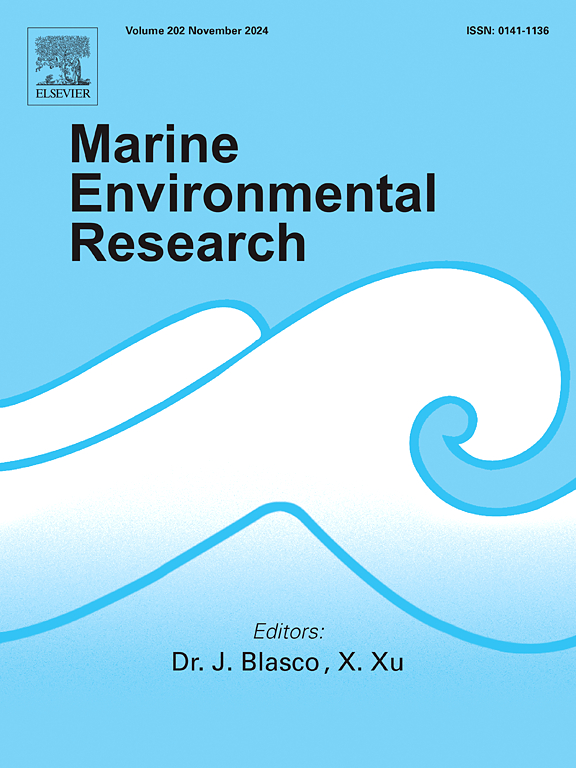Co-occurring foundation species increase habitat heterogeneity across estuarine intertidal environments on the South Island of New Zealand
IF 3
3区 环境科学与生态学
Q2 ENVIRONMENTAL SCIENCES
引用次数: 0
Abstract
Estuaries are traditionally considered sedimentary ‘bare’ ecosystems, dominated by infauna that bury into sediments to avoid being eaten by fish or birds. However, estuaries can be converted to biogenic complex ‘hard’ habitats, like seagrass beds, seaweed patches or surface-deposits of live or dead shells. Furthermore, habitat heterogeneity is enhanced if these foundation species co-occur. Still, few studies have quantified abundances and co-occurrences of different types of foundation species along spatiotemporal stress gradients. We therefore quantified abundances of seagrasses (Zostera muelleri), seaweeds (Ulva spp., Gracilaria chilensis), surface deposited dead shells and densities of dominant and partly buried cockles (Austrovenus stutchburyi) in estuaries on the South Island of New Zealand. A total of 927 large-scale drone images, 1264 small-scale camera images, and 160 sediment-quadrats were collected from 32 common estuarine environments (fully crossed 5-factorial surveys with 2 latitudes x 2 sites x 2 intertidal elevations x 2 seasons x 2 intra-seasonal sampling months). Across the 32 environments, seagrass was most abundant (19–22 % cover, depending on sampling method), followed by shells (9–13 %) and seaweed (4 %). Scattered seaweed and shells were, despite their low cover, ubiquitous in the 32 environments, and seagrasses always co-occurred with shells and/or seaweed. The spatial gradients had a stronger influence on abundances of foundation species than temporal factors, that mainly affected seaweed and live cockles, with high (70 %), medium (50 %) and low (30 %) statistical agreement between analysis of drone vs. camera images for seaweed, shells and seagrass, respectively. Finally, correlation analysis revealed negative associations between seagrasses and both shells and seaweed, but with large variation between seasons. Our study highlights that foundation species rarely occur as single-species stands, and that the ecological impacts of scattered seaweeds and dead surface-deposited shells within seagrass beds should be studied in more detail. Our findings also underscore the critical role of spatiotemporal stressors in shaping estuarine ecosystems and highlight the importance of using supplementary sampling methods to inform management strategies for estuaries in the face of environmental change.
求助全文
约1分钟内获得全文
求助全文
来源期刊

Marine environmental research
环境科学-毒理学
CiteScore
5.90
自引率
3.00%
发文量
217
审稿时长
46 days
期刊介绍:
Marine Environmental Research publishes original research papers on chemical, physical, and biological interactions in the oceans and coastal waters. The journal serves as a forum for new information on biology, chemistry, and toxicology and syntheses that advance understanding of marine environmental processes.
Submission of multidisciplinary studies is encouraged. Studies that utilize experimental approaches to clarify the roles of anthropogenic and natural causes of changes in marine ecosystems are especially welcome, as are those studies that represent new developments of a theoretical or conceptual aspect of marine science. All papers published in this journal are reviewed by qualified peers prior to acceptance and publication. Examples of topics considered to be appropriate for the journal include, but are not limited to, the following:
– The extent, persistence, and consequences of change and the recovery from such change in natural marine systems
– The biochemical, physiological, and ecological consequences of contaminants to marine organisms and ecosystems
– The biogeochemistry of naturally occurring and anthropogenic substances
– Models that describe and predict the above processes
– Monitoring studies, to the extent that their results provide new information on functional processes
– Methodological papers describing improved quantitative techniques for the marine sciences.
 求助内容:
求助内容: 应助结果提醒方式:
应助结果提醒方式:


